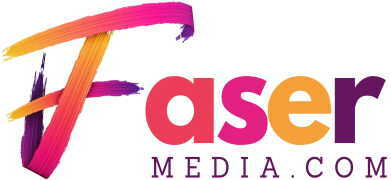Whether you are an employee or a business owner, it is important to understand the details of pay stubs. This article will discuss the basics of paystubs and how to spot common accounting errors that could result in unexpected costs for your business. With this knowledge, you can be sure that your business is running smoothly and efficiently.
What is a Paystub?
A pay stub also called a payslip or paycheck stub is a document that an employer provides to an employee detailing their earnings over a specific period of time. Paystubs typically show the employee’s total earnings, deductions, and net pay.
Most employers now provide electronic pay stubs instead of physical ones. However, some employees may still receive paper pay stubs if they request them or if their employer doesn’t offer electronic pay stubs.
Paystubs can be helpful for employees to keep track of their earnings and deductions. They can also be useful for catching errors that an employer may have made in calculating an employee’s pay.
If you’re an employee and you spot an error on your pay stub, it’s important to bring it to your employer’s attention so that they can correct it. If you’re an employer, double-checking your employees’ pay stubs before sending them out can help you avoid costly mistakes.
Components of a Paystub
A pay stub also called a paycheck stub or payslip is a document that an employee receives from their employer that shows how much they have earned and what deductions have been taken out of their paycheck. The most common deductions are taxes, insurance premiums, and retirement contributions.
While the format of pay stubs can vary from company to company, most will include the following information:
–Employee name and address
–Employee ID number
–Social Security number
–Date of a pay period
–Gross pay (total amount earned before deductions)
–Net pay (total amount earned after deductions)
–Deductions (federal and state taxes, Medicare and Social Security, health insurance, retirement contributions)
How to Read and Interpret Paystubs
In the event that you get your pay stubs online or through direct deposit, there are a few things you should check for. Your name, employee ID number, and the pay period’s date are all listed under your personal information at the top of the page. A breakdown of your gross income and deductions follows below.
Before taxes and other deductions, all sources of compensation are included in gross earnings. This could involve standard hourly pay, overtime compensation, commissions, gratuities, and bonuses. Deductions may include things like federal and state taxes, Medicare and Social Security contributions, health insurance premiums, retirement plan contributions, and union dues, however, they might vary based on your employment and benefits package.
Common Accounting Errors on Paystubs
There are a number of common accounting errors that can occur on paystubs. These include:
- Incorrect calculation of overtime pay
- Incorrectly classifying employees as exempt or non-exempt
- Misclassifying expenses as business expenses
- Failing to withhold taxes correctly
- Incorrectly calculating vacation pay
If you spot any of these errors on your pay stub, it is important to speak to your employer about them as soon as possible. Failure to do so could result in you being underpaid or overpaying taxes.
Tips for Avoiding Accounting Errors
Common accounting errors can result in overstated or understated income and expenses, which can lead to problems for businesses and individuals alike. Here are some tips for avoiding accounting errors:
- Use a reputable accounting software program. This will help to ensure that your financial data is accurate and up-to-date.
- Keep good records. This means keeping track of all income and expenses, as well as receipts and invoices. This will help you catch any errors that may occur.
- Reconcile your accounts regularly. This means comparing your records to your bank statements and credit card statements to make sure they match up. This will help you catch any discrepancies early on.
- Hire a professional accountant. This may be an expense, but it is worth it to have someone experienced in keeping financial records to help you avoid mistakes.
Tools to Help Spot and Correct Accounting Errors
There are a few tools that can help you spot and correct accounting errors on your paystubs. First, you can use a pay stub calculator to check your pay stubs for accuracy. Second, you can review your pay stubs line by line to look for any discrepancies. Finally, you can compare your pay stubs to your W-2 form to make sure that all of the information matches up. If you find any errors on your pay stubs, be sure to contact your employer so that they can correct the mistake.
Conclusion
Paystubs can be a complicated document to understand. It’s important to review your pay stub regularly in order to make sure that everything is accurate and that you are being properly compensated for the work you do. By understanding what each item on the pay stub means, spotting common accounting errors, and learning how to challenge incorrect information, you can ensure that your paycheck is correct every time.
